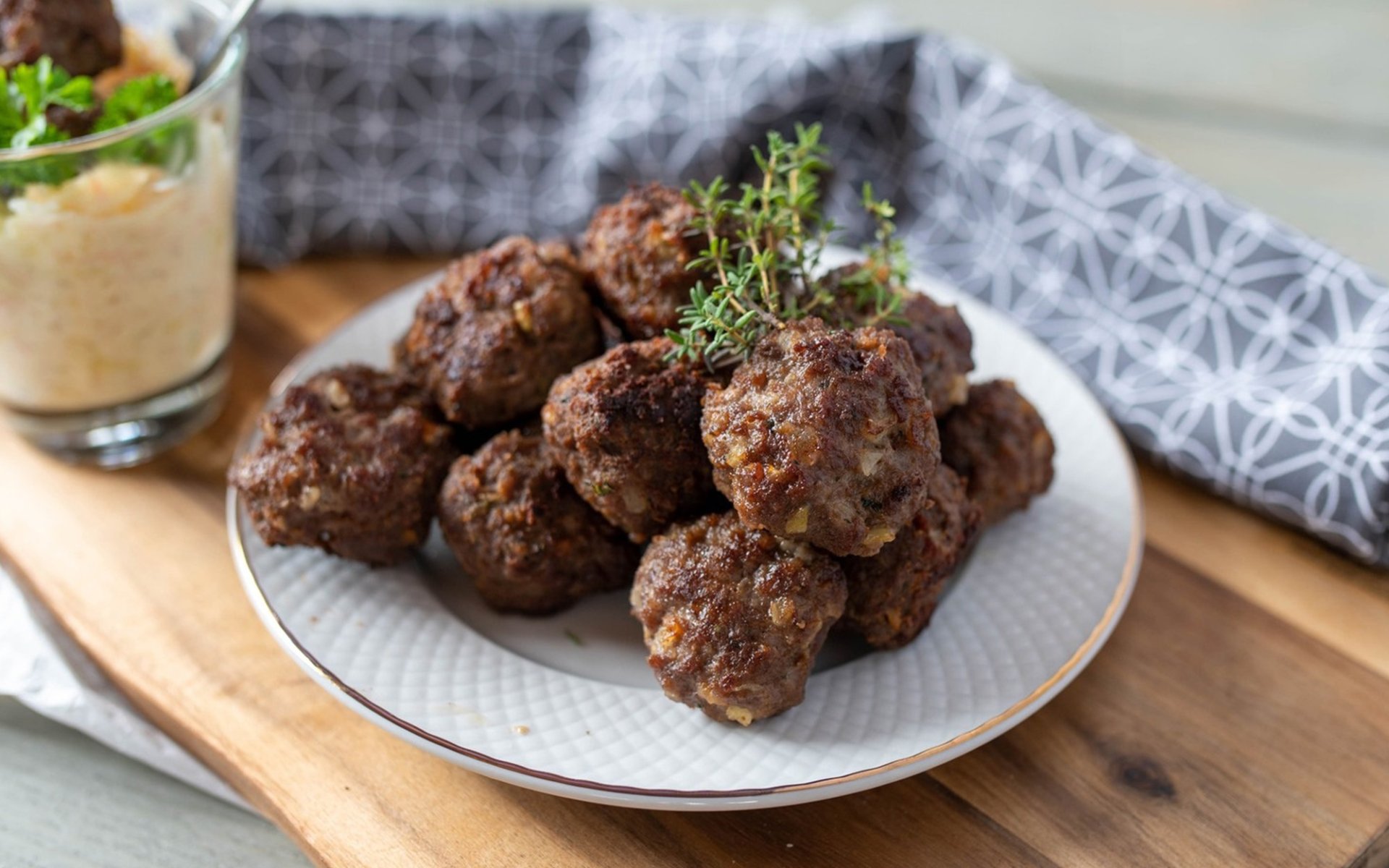Köttbullar

Köttbullar (CHURT-bool-lahr) are unique meatballs, characterized by their rich and savory-sweet flavor. They are made from a blend of key ingredients like ground beef, onions, garlic, and milk, rolled into bite-sized balls, then pan-fried until crispy on the outside and tender on the inside. They are typically served with Lingonberry sauce, a sweet and tart accompaniment, and mashed potatoes, both popular side dishes in Swedish cuisine since ancient times. Today, Rimping Supermarket invites you to delve into the delicious history of this world-renowned meatball.
Origins from the Ottomans to Swedish Meatballs
The story of Köttbullar's origin traces back to the Ottoman Empire. Legend has it that King Charles XII of Sweden (Konung Karl XII), a great warrior and ruler, sought refuge in the Ottoman Empire for several years during wartime. After the war ended, King Charles XII brought back not only political and cultural ideas to Sweden but also the meatball recipe, inspired by Turkish cuisine. He then developed it to embody a unique Swedish character and named it Köttbullar (Swedish for meatballs).
Köttbullar in Swedish Society: From Nobility to Common Households
In the early 18th century, Köttbullar gained increasing popularity, often served as a luxurious dish on the tables of the nobility. During this period, Swedish aristocrats began to absorb French culinary influences, marking a shift towards more refined and complex cooking techniques, including the use of various new spices and seasonings.
Over time, Köttbullar began to spread to all social classes, becoming a staple in Swedish households. This led to further adaptations of the recipe based on local preferences and available ingredients. Some households switched to ground pork or a mixture of pork and beef, adding eggs and breadcrumbs to help the meatballs become softer, fluffier, and hold their shape better. They continued to be served with the distinctive sweet and tart Lingonberry sauce and mashed potatoes, a classic accompaniment.
Global Reach : From Emigrants to Ikea
By the 19th century, Köttbullar started gaining international recognition, partly due to Swedish emigrants settling in various countries such as the United States, Canada, Germany, and Australia. In these countries, Köttbullar was commonly enjoyed with a rich cream sauce (gravy) and mashed potatoes.
Later, in the 20th century, Köttbullar's international popularity surged dramatically, partly thanks to Ikea, the Swedish furniture giant. In 1980, Ikea began selling Köttbullar in its in-store restaurants to allow customers worldwide to experience Swedish taste and culture at an affordable price. As a result, Köttbullar became widely recognized and synonymous with Swedish cuisine across the globe.
The Important Cookbook: Preserving the Traditional Recipe
However, Köttbullar might not have been as widely known and passed down to the present day without its recipes being meticulously documented. Notably, Cajsa Warg (KYE-sah Varg), a Swedish chef and cookbook author, compiled recipes in her 1755 book, The Sensible Housewife. Her recipe specifically called for a mixture of beef and pork, along with breadcrumbs, onions, and spices such as allspice and pepper. This particular recipe significantly influenced the preparation of Köttbullar in subsequent eras.
Today, Köttbullar remains one of the iconic dishes of Swedish cuisine, continuing to be popular worldwide. It is often served as a main course or a snack at various social gatherings and remains a beloved dish for many.


